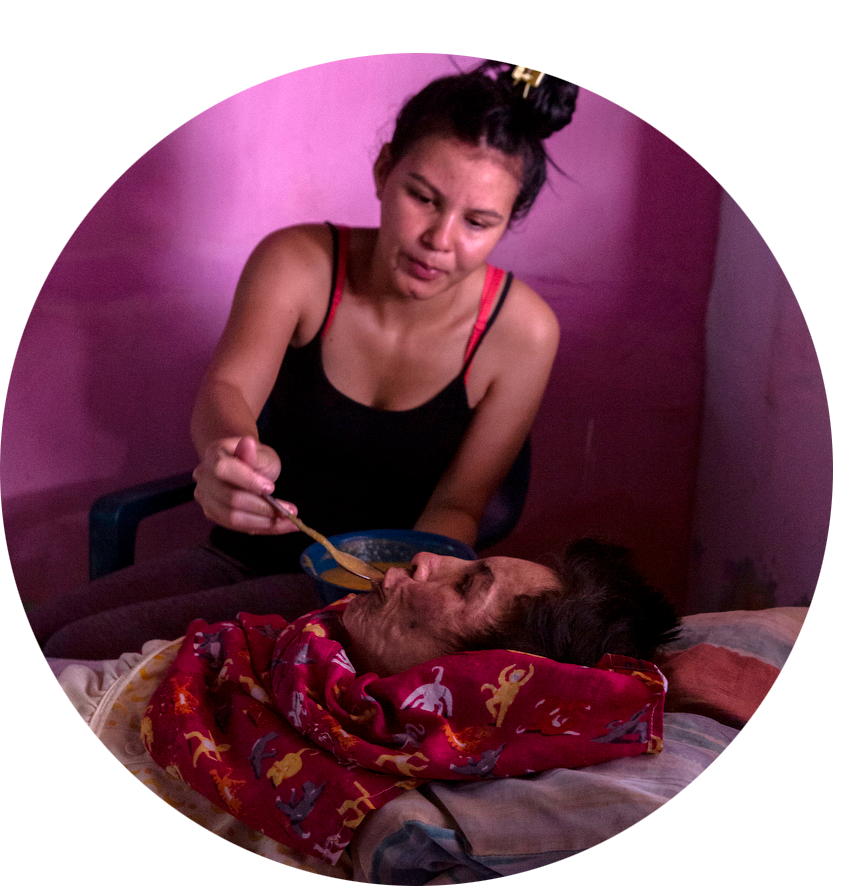

Let us tell you this Story...
In the area surrounding Lake Maracaibo, Venezuela, the prevalence of HD was (still is) the highest known in the world. ¿Could such a dark shadow be holding the key for light & hope for all affected families?
Some people thought so.
Every spring, for more than 20 years, Nancy Wexler led an international team of researchers and clinicians on a month-long visit to the area to examine, study and care for HD families in this region. They started tracing the path of the disease through 10 generations in a family tree that included more than 18,000 people, and during these visits, the Venezuelan HD families generously and consistently donated blood and other biological samples.
On March 23rd, 1993, the US-Venezuela Collaborative Research Network scientists announced the discovery of the gene causing Huntington’s Disease (HD). The announcement, after decades of research, made evident the partnership of ‘families living with HD’ and the ‘scientists working on their behalf’. This milestone and partnership were celebrated in homes, laboratories, and clinics.
Around the world, many HD families contributed their DNA samples to the research teams, and this enabled to the discovery of the gene. Hundreds of families from Venezuela played a significant role in this achievement.

The first large set of accounts of the manifestation of HD in Venezuela was compiled in the book “Huntington’s chorea”, which Dr. Negrete published in 1963. The book contains the clinical histories (based on in-person interviews at that time) of 68 men and women and children afflicted with HD.
Dr. Américo Negrete was a physician who worked in San Francisco, Maracaibo, and who first described the extremely high prevalence of HD in the fishing villages surrounding Lake Maracaibo. His student Dr. Avila-Girón traveled to Ohio in 1972 where he first reported on the families in this region at an international conference.
Dr. Nancy Wexler discovered the existence of these very large families going back five generations, which would be ideal to understand the genetic origins of the disease. Soon after, Nancy Wexler traveled to Venezuela alongside neurologists Drs. André Barbeau and Loe Went, to assess whether these communities were indeed afflicted with HD, launching the beginning of the project to identify the genetic basis of HD, a project that would last more than two decades (from 1979-2002).
Today, 30 years after the identification of the HD gene, the descendants of the families who contributed so much to our research quest are living in extreme poverty. Factor-H & affiliated Venezuelan organizations continue the work started by Nancy Wexler & HDF to help those families. More than 350 families are being assisted through our medical and humanitarian programs. We also support 368 children at-risk for HD ranging in ages from 2-18, and living in poverty. Together we can do more.
This is why Gratitude Day holds such meaning in our hearts.
Please join our cause!


March 23rd was a day to celebrate in 1993 and, we believe, from this 30th aniversary on, it should be a date to celebrate annually. A day to recognize, reflect upon and express our collective gratitude for our partnership. And also, a day to give to the familes in Venezuela, whom, after giving so much for the HD comunity, still live in conditions of extreme poverty, facing discrimination, and most of the time with lacking clean water, sanitation, access to HD medications and, of course, access to the genetic test, which was made possible due to their contributions year after year.
